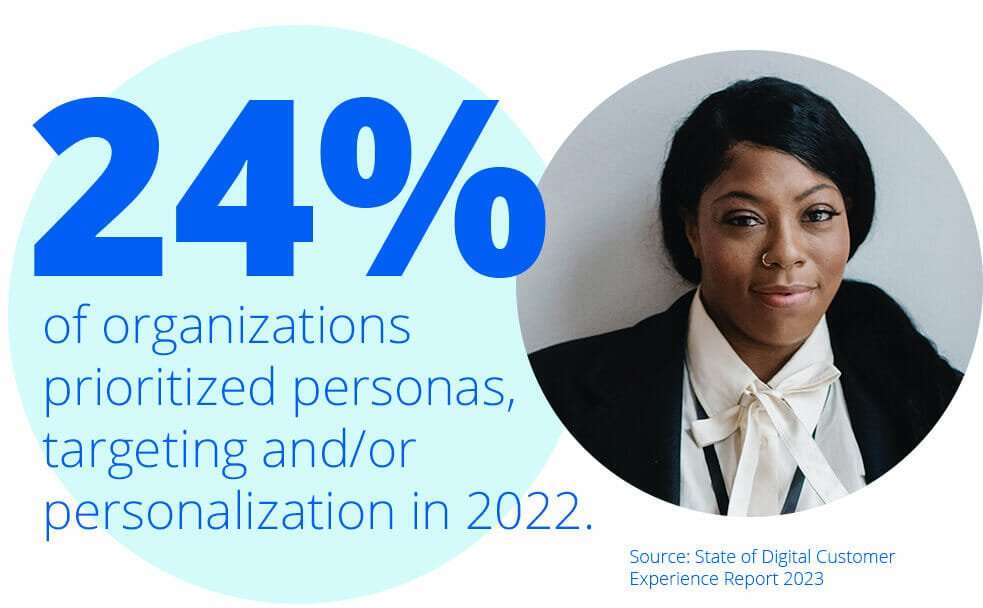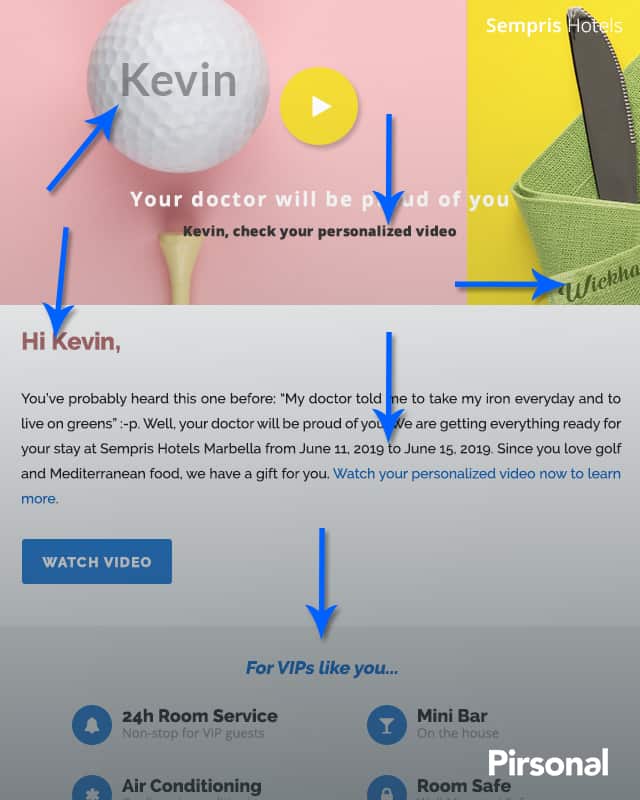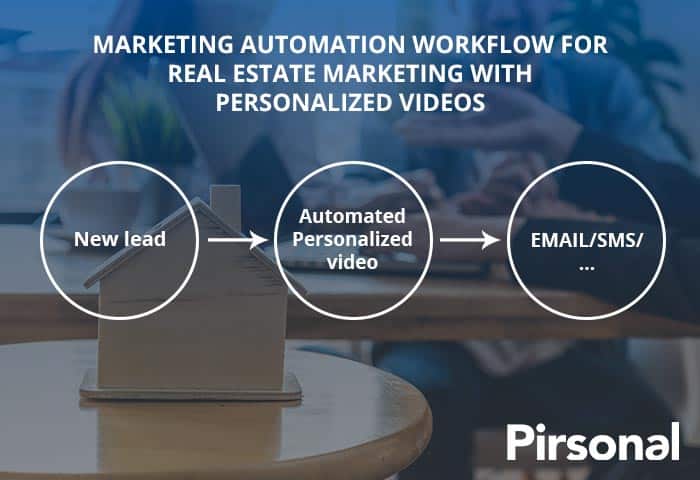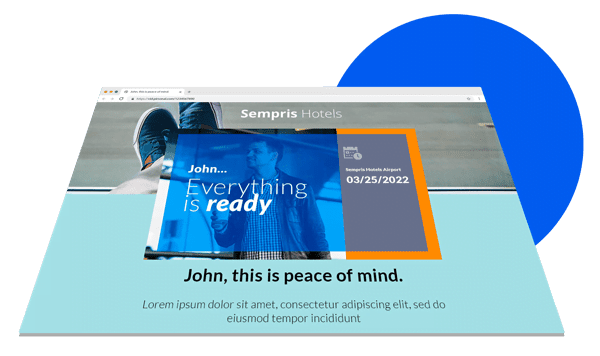Marketing managers are constantly seeking innovative strategies to captivate their target audience, drive engagement and achieve business growth.
Personalized video marketing has emerged as a powerful tool to engage customers on a deeper level across the customer journey.

However, implementing personalized video marketing for the first time can present unique challenges for marketing managers.
Some of the most prevalent obstacles include comprehending your target audience’s preferences, making sure that the tailored video content is relevant, ensuring technical compatibility, evaluating performance, and seamlessly aligning with current strategies.
But just like any innovative strategy, creating personalized video messages for customers has more things to consider.
In this article, we will explore seven common obstacles marketing managers may encounter when working with personalized video marketing for the first time.
You’ll also learn insights on how to overcome them successfully.
This article complements the tips I share in the following video to help you start with personalized videos in your marketing.
Common Personalized Video Marketing Challenges

Today’s customers expect brands to deliver personalized experiences.
These experiences build up loyal customers and accelerate lead-to-close ratios.
Personalized video marketing has emerged as a powerful tool that enables businesses to connect with their customers on a deeper and more personal level.
By tailoring video content to individual preferences, marketers can deliver highly relevant messages that resonate with current and potential customers.
However, while personalized video marketing holds immense potential, it also presents several challenges that marketing managers need to overcome to maximize its effectiveness.
Whether you begin with a personalized video pilot program or a proof of concept (POC) or you are fully committed to scaling, there are challenges most first-times face.
Understanding these challenges will help you avoid many of the mistakes marketing teams fall into when starting with data-driven videos.
Watch the following video to learn how to build a successful personalized video campaign from the three areas and perspectives I recommend to succeed.
Lack Of Customer Data or Context
In the realm of personalized video marketing, knowing your target audience is paramount to achieving above-the-average results.
An average result is what your competitors can already experience if they start with personalized video marketing today.
By delving into customer data and understanding the context behind it, you can create tailored videos that speak directly to your audience’s needs and desires.

It is the best way to create and deliver a personalized customer experience with video.
This is one of the reasons why I recommend applying what I call an augmented buyer persona.
With the right software, every piece of content in the video and around the video can be personalized.
For example, Pirsonal’s video software allows marketers to personalize videos automatically with images, video clips, audio files, and text content for every video at scale.
However, most companies only personalize the text as it is the easiest approach for beginners.
And this is totally fine.
If you are considering a strategy to personalize video content, text personalization is a good first step.
Now, the reality is that many companies don’t have many details about individual customers apart from the first name field in their CRM.
And, if they do, most don’t know how to use this customer data.
This not only affects personalized video marketing initiatives, but also other more common ones like email marketing with personalization.
For instance, here you have a screenshot of an email with personalized content, including video.

So. as you can see, many will be missing an opportunity.
Since you are reading this today, that won’t be your case.
Right?
Having accurate customer data can improve your marketing with personalized videos by getting more attention, interest, and ultimately generating action.
Know how to use customer details in your video marketing will be a game-changer.
If you want your personalize video marketing to be a success story, do the following:
- Gather more customer data across the customer journey. Focus on the information that will help both customers and your organization have meaningful customer interactions. As I often say, marketing is a conversation. The best conversations are context-rich.
- Make sure you can store this information in a structured way. For many, this will be a CRM, marketing automation tool or customer data platform.
- Think creatively about the meaning of the information you gather. For instance, in B2B marketing, the seniority level is a big one. Regional and global marketing managers have different needs, so the video content shown to them should be tailored accordingly.
Watch the following video to learn how to gather, analyze and use customer data to create personalized marketing strategies through the customer journey.
Creating High-Quality Video Content
One of the primary challenges marketing managers face when implementing personalized video marketing for the first time is creating high-quality video content.
In my experience, you’ll find two extremes.
Either Hollywood-like video content.
Or poorly-designed videos.
Which one wins?
Well, it depends.
In my view, generally speaking, you have three desirable outputs no matter the video quality you choose:
- Achieving your metrics and business goals.
- Supporting brand awareness through digital channels.
- Getting the desirable ROI after you’ve executed the campaign.
Successful personalized video programs will accomplish these three areas.
Then, if you achieve these three components, generally speaking, you’ll succeed.
And, like it or not, this can also happen with a poorly-designed video if this video accomplishes all the following three aspects:
- It engages viewers depending on how they digest information.
- It represents the brand through the video and related campaign assets.
- It moves them to take action in a way you can measure.
Then, when conceiving the content for your personalized video messages, make sure the three components I mentioned are clear.
Creatively and strategically speaking, I’ve found that the best way to do this is by dividing the video into three sections:
- Intro: This section targets viewers that won’t watch the full video because they don’t have to watch it all in order to make a decision. This is why you’ll somehow express what their next step should be.
- Main: This section targets most viewers. Here, you’ll usually reinforce the value proposition and will share details on their next step and how to get there.
- Outro: This section is directed to users that need all details in order to make a decision.
In the following video, I explain a real-life case study. Watch it now to understand why I often recommend this personalized video structure to maximize results, no matter the video quality.
Managing Bulk Data In Spreadsheets for Video Personalization
Many companies use spreadsheets to create personalized videos.
With Pirsonal, you can personalize videos automatically whether you use spreadsheets, our API or integrate it with other CRM and marketing tools—literally, thousands of them.
But about 40 to 50 percent of companies prefer spreadsheets.
Spreadsheets are easy and practical.
But depending on how your brain is wired, formatting the data in spreadsheets accurately can be challenging for marketing managers new to personalized video marketing.
As I mentioned, to deliver relevant and targeted videos, marketers need to collect and organize customer data effectively.
But there is more.
You need to make sure that the data is accurate and in the right format based on your particular workflow.
The same way you wouldn’t upload a spreadsheet with mixed-up columns to Salesforce or HubSpot, you wouldn’t do it to send personalized videos to customers.
Imagine rendering thousands of videos for customers with the wrong data!
I’ve done it.
It’s painful.
Although it does help to have a personalized video platform that renders the videos at speed like Pirsonal.
It is critical to double-check that the data is accurate before creating the videos with personalization.
My recommendation is to always run a small test campaign.
10 to 20 test videos are usually enough, but it depends on how complex the data in the videos is.
Balancing Automation and Personalization
Automation is a valuable tool that marketing managers can utilize to streamline their personalized video marketing efforts.
I love this thing because I don’t need to be a programmer to use it and I have the flexibility to do things on my own without needing an engineer.
To use tools like Zapier, Make, or n8n for automation workflows, you need to learn some basics even though most of the time you can just set it up and not worry about it.
You can virtually create personalized videos based on any event or trigger.
For instance, you can automatically create a personalized video with Pirsonal when a Salesforce lead submits a web form to improve lead engagement.
Take a look at the following infographic that explains this process.

Use marketing automation and personalized videos to engage with real estate leads
Or accelerate product or service activation with personalized videos whenever a new customer signs up for your product or service.
To create a marketing automation workflow with personalized videos, think about how the process can adapt to your needs instead of the opposite.
Watch the following video to learn how to create an automation with personalized videos using Pirsonal’s Zapier app.
https://www.youtube.com/watch?v=JKs4SVmQsWg.
As you can learn from the video, it can be quite easy and fast to set up.
Ensuring Consistency across Channels
Marketing managers often face the challenge of maintaining consistency across different marketing channels when implementing personalized video marketing.
Personalized video campaigns are commonly initiatives triggered by marketing, customer experience, or sales teams.
Many of these teams rely on small creative teams.
Many don’t have an in-house team and will outsource any creative task to an agency.
When marketing teams fully manage personalized video campaigns, they need to make sure that the different assets are aligned with the way the brand communicates.
Also, it is important to align messaging and branding across various touchpoints to reinforce brand identity and create a cohesive customer experience.
This requires careful coordination with other marketing channels to ensure a seamless and integrated approach.
This is one of the reasons Pirsonal’s video personalization software automatically creates personalized landing pages for every video.

This way, marketing teams don’t have to find third-party help. They simply add their desired assets and the software takes care of the rest at scale.
Measuring the Effectiveness of Personalized Videos
As mentioned, to have a successful personalized video marketing campaign, you should have a target KPI, understand what ROI means, and ensure your brand is well-represented.
The majority of brands that embrace personalized video content creation do it because they want to improve customer engagement.
However, many don’t have a specific way to measure engagement.
So, later on the road, they find it hard to justify why they want to start with this type of marketing strategy.
This is why you need to know what measure so that then you know if this marketing strategy makes sense.
But make sure that the metrics you choose are directly connected to your strategy with personalized videos.
There are three audience interaction moments you should pay attention to. Each one will bring its own metrics.
- Before the video has been played. For instance, you’ll measure email open rates and click-through rates (CTR).
- While the viewer plays the personalized video. Here, you’ll normally track the percentage of video views and the engagement rate of the calls-to-action (video CTA).
- After the video has been played. Relevant metrics include conversion rates, leads that have been contacted, or lifetime value.
Defining KPIs that align with campaign objectives is crucial.
By tracking these metrics, marketers can gain insights into the performance of their personalized video campaigns and make data-driven decisions to optimize future efforts.
When choosing personalized video software, make sure to choose a platform that provides analytics from four perspectives:
- Easy-to-understand reports. This will help you know at a glance if your initiative is delivering the results you expect.
- Structured video analytics you can download in CSV format. This will help you add this data to your other marketing tools.
- Real-time API with video analytics. This way, you can instantly use video engagement information as events happen.
- At-a-glance viewer engagement. This is a preferred option for companies using personalized videos in account-based marketing.
When customers use Pirsonal’s interactive video player, they can easily track video engagement and interactions in the ways described above.
Overcoming Technological Barriers
Implementing personalized video marketing for the first time often involves overcoming technological barriers.
Integration with existing systems, such as customer relationship management (CRM) software or marketing automation tools, is also essential for a seamless workflow.
This is one of the reasons why at Pirsonal we offer a hands-on approach.
Most teams don’t have bandwidth or expertise, so they prefer getting expert help.
Marketing managers need to choose the right personalized video software that provides the necessary support and responsive professional services.
However, personalized video software should also provide self-service tools to create and execute campaigns at your own pace.
At Pirsonal, we follow a combined approach.
Staying updated with emerging technologies in the field of video marketing is crucial to take advantage of new opportunities and stay ahead of the competition.
Conclusion
Implementing personalized video marketing for the first time poses challenges for marketing managers, despite its potential to engage customers and increase business and engagement growth.
This is why at Pirsonal we walk with our clients to help them achieve their audience engagement goals with personalized video marketing.
Understanding the potential challenges you’ll face based on your current situation will help you decide what approach is best for your organization.
It will also help you set realistic goals and a timeframe for your first personalized video campaign.
If you want to know more about how your team can start with personalized videos, contact us today. We’ll do our best to understand your goals and provide expert information to help you succeed.
FAQs
What is personalized video marketing?
Personalized video marketing refers to the practice of tailoring video content to individual viewers, delivering highly relevant messages based on data, preferences, and interests.
How can marketing managers create high-quality video content?
Marketing managers can create high-quality video content by carefully planning the pre-production phase, including identifying the target audience, setting clear objectives, and crafting compelling scripts. They should also pay attention to technical aspects during the production phase and refine the video through editing and post-production.
What is customer segmentation, and how does it help in personalized video marketing?
Customer segmentation is the process of categorizing the audience into different groups based on common characteristics and preferences. It helps marketers create personalized videos that resonate with specific segments of their audience.
How can marketing managers measure the effectiveness of personalized videos?
Marketing managers can measure the effectiveness of personalized videos by defining relevant KPIs before, during, and after personalized videos have been played. Tracking these metrics provides insights into the performance of video campaigns and helps optimize future efforts.
What technological considerations should marketing managers keep in mind for personalized video marketing?
It is important to define how and when you need personalized videos to be triggered. Choose the best personalized video software that integrates with current systems or workflows, and keep up-to-date with new technologies to improve personalized video marketing.

